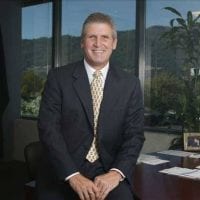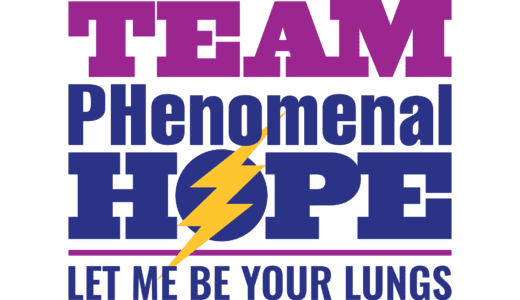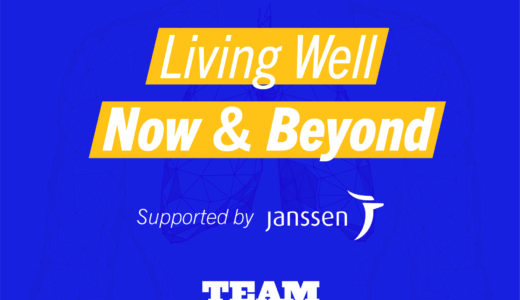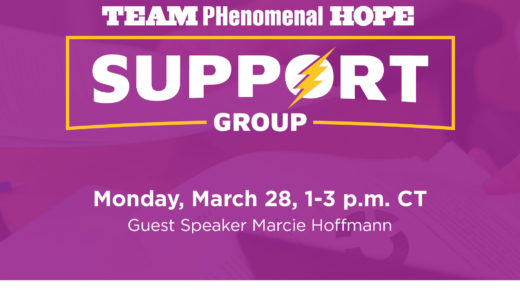Harry Rozakis: My CTEPH Story
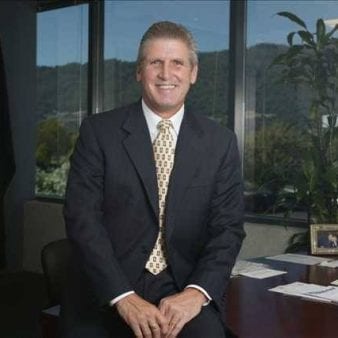
I am PTE 495! I will always be PTE 495. I didn’t ask to be PTE 495. Had I known what PTE 495 was before I became it, I would have never wanted to be it. Given the circumstances leading up to it and finally becoming it, I can now say, that I am glad to have been PTE 495.
It’s interesting how in life you can become something you never planned on being. Once you finally become it, and learn from it, it’s astonishing how it gives your life an entirely new perspective. The great thing about becoming PTE 495 is that every day by a single breath and the nine-inch scar down the center of my chest I am reminded of how lucky I am to be PTE 495.
Pulmonary Thrombo-Endarterectomy (PTE) is, “an operation that removes organized clotted blood (thrombus) from the pulmonary arteries.” It is, “a treatment for chronic thromboembolic pulmonary hypertension (pulmonary hypertension induced by recurrent/chronic pulmonary emboli),” a rare disease that results in increased pressures in the pulmonary arteries. Or, so says Wikipedia.
I think of it more like having your chest cracked open so that surgeons can remove miserable, not so little, clots which have attached themselves to your pulmonary arteries, forming scar tissue which eventually constricts the passageways in your arteries, preventing you from breathing normally for years. The upside is that in cases such as mine, you get your breath, your family, and your life back, and as time wanes on being PTE 495, though becoming in some ways a lesser part of your life, it is also the reason you have a life.
I should have probably started this story at the part where a Stanford Pulmonologist, Dr. Norman Rizk, said, “It is a good thing you came to see us, Mr. Rozakis, because in one to two years you’d either be dead or in the heart/lung transplant center.”
At least that’s how I heard it. That was before PTE 495, when I was known as Harry Rozakis, a 43 year old, married with three kids, man from California, with his own tech company, a mortgage, car payments, and a bad golf game. A “young” man who had just been told something about dying and transplants. Words which at the time really didn’t resonate. And, no, the first words out of my mouth were not, “Oh no,” but rather a garbled sound more like “ugh…”
The thing is, was that day in 1993 at Stanford really such a big surprise? Not really. After all, going to Stanford was all about my persistent wife, Diane, telling me that we’re going to get a second opinion. Now you might be asking, “So there was a first opinion?”
Oh yeah, there were plenty of first opinions. Opinions going back at least 20 years. The most recent one, prior to the Stanford visit, was the one that happened after telling a suburban cardiologist that I was having some serious breathing issues. I had been wrestling with my teenage son in the swimming pool when he said, “Dad you sound like you can barely breathe.”
Of course I should emphasize that this breathing thing had really been a problem for quite some time, but I was over 40 years old, so breathing hard is normal. Right? Dr. Suburban, as I shall call him, sent me off to have my blood gases checked, during which it was noted that while running on the treadmill my oxygen levels were extremely low. Receiving these results, Dr. Suburban sent me over to the hospital to have a venogram and a VQ scan.
“Alas,” I thought, “just another way for the medical profession to make some more money off an unknowing patient. I may have been a bit cynical in those days.
After the venogram, having learned that I had multiple blood clots in each of my legs, which was clearly not a good thing, I recalled my father having clots in his legs and having them treated with blood thinners. The VQ scan was a little bit different. I am not sure whether it was all the dark green patches on my lungs which the display exhibited, or the look of panic on the medical technician’s face that first got my attention, but all of a sudden I had a very sinking feeling.
This feeling worsened when I was asked not to leave the hospital. When Dr. Suburban showed up, he indicated that I was operating on a third lung capacity and my pulmonary arteries were full of clots. He never called it a disease or really explained how all this happened. I stayed in the hospital so they could put a Greenfield filter (a tiny umbrella like piece of titanium that is inserted in the inferior vena cava) in me and put me on anticoagulants. All of which occurred without any problem, and so Dr. Suburban handed me a prescription for Coumadin, and sent me home.
There was just one little problem; I still couldn’t breathe. Now, breathing doesn’t seem to be such a big thing when you can do it all the time without much, or any difficulty, but when you can’t breathe it not only gets your attention; it gets the attention of most of the people around you. And quite honestly it’s not much fun not being able to speak or breathe after you climb a flight of stairs.
For me, not breathing was something I worked into my life, going as far back as my teen years. Interesting how a guy who always appeared in terrific physical shape always found himself getting exhausted quickly and breathing so heavily. The initial doctor(s) who diagnosed me with sports induced asthma were great, because I finally had something on which to blame all this gasping. This was as good an excuse as any in those early years, but before I knew it I was in my twenties, married, had two kids and my first career focused job.
It was an interesting time because though I continued to exercise, lift weights and run, this sports induced asthma thing seemed to be getting worse. Shortness of breath seemed more frequent, and the occasional pounding in my chest all began to concern this young husband and father. I was so fortunate; however, to have my local doctor tell me that along with my sports induced asthma I must seriously be feeling the pressure of being a young Dad who was just launching his career. How comforting! Now if we could only solve this breathing thing.
As you can imagine the story didn’t change much as a few more years faded away and I found my family and I living overseas. Despite a shortness of breath and the yet unknown PTE 495 looming in my future, life was pretty good. We added another child to the household, my career was taking off, and life just couldn’t be better. Except of course for this breathing thing which seemed to be becoming more challenging. Deciding not to let my body take control, I took up racquet ball.
Since you lose your bragging rights in your twenties, I have to be cautious about saying what a good racquetball player I became in my thirties. Good for the first game that is. Oh, I could win most first games I played with opponents. Then, total exhaustion would set in and I would be panting on every shot. I was good enough to win a few second games now and then, but the reality was breathing was getting harder on and off the court.
When I would go visit business clients I would worry about walking up flights of steps to people’s offices, because many times for the first couple of minutes I couldn’t speak without panting. I was so focused on forcing myself to stay healthy; I actually gave up red meat, thinking that this could be a contributing factor to my peculiar breathing habits.
Not to be dissuaded, I went to see a physician who sent me on to a cardiologist. Unbeknownst to the cardiologist and I, even after my treadmill test, my heart was doing a good job compensating for the lack of oxygen in my lungs. Over the next couple of years I saw a couple of cardiologists, echoing my recurring problems with shortness of breath, occasional chest pains, arm pains, and general exhaustion. When my wife was told that I might be under a significant amount of stress and might want to consider seeing a psychiatrist, I put a stop to seeing physicians. Literally into my early forties, I was able to make excuses and modify my life as to not confront what was happening with my body.
Unfortunately this kind of self-deception can only go so long when it comes to health issues. I was 43 years old when things finally got to the point of having to see Dr. Suburban. I couldn’t hike, I couldn’t work out, and I could barely walk up steps let alone mow the lawn or do household chores. My visit to Dr. Suburban went as already discussed, the visit to Stanford was on the horizon and PTE 495 was getting closer with every passing day.
As I drifted back to reality after the comments about death and transplant, I heard Dr. Rizk say something about a very unique surgery which is done at only one medical facility in the world, and for which you had to be a candidate. It was something called a pulmonary thrombo-endarterectomy, and the University of California San Diego Medical Center was the only hospital that could perform the surgery. The good news was that San Diego was a short flight and they had great weather. The surgery portion of this deal was a little more concerning. The days towards becoming PTE 495 were getting shorter.
Because I was diagnosed just before Christmas in 1993 I would not be able to go to UCSD for a surgery evaluation until sometime in the first quarter of 1994. There was an element of relief in knowing exactly what I had and that there was at least an option on the table, nevertheless it did not subordinate the fact that I still could not breathe. The combination of scheduling my evaluation, the holidays, and trying to manage how my business would operate in my absence carried me into 1994 before I could be evaluated.
By the time I got on a plane for San Diego I was anxious for things to move fast. I have come to know that sometimes the more anxious you are for something to happen the longer it seems to take. Getting to San Diego was great because although Dr. Rizk was terrific in explaining to me what I had, the people at UCSD under the leadership of Dr. Ken Moser were stellar in terms of educating me about my disease; Chronic Thrombo-embolic Pulmonary Hypertension or what we have come to know as CTEPH. There was a level of satisfaction in knowing that this disease was something that I could not have prevented or which was caused by behavior. I was naïve enough to wonder in those days how I could end up with a lung disease when I never smoked a day in my life.
After an array of tests, I learned from the doctors at UCSD that I had clots that were accessible surgically and that I was indeed a candidate for a PTE. The thought of a relatively new lengthy surgery where my heart would be placed on bypass was tough to reconcile, but not as tough as the thought of living the rest of my life with a disease which would get progressively worse and limit my mobility.
There is truly something surreal about having to make a life or death decision, and though my response to the doctors was “Let’s do it,” the realities of what was about to happen were just below the surface. PTE (number unknown) was about to happen. That was until the doctors told me there was a wait list.
“A what?” Yes of three to four months. “Well what am I supposed to do until then?” The response, “Nothing,” was not what I wanted to hear.
Before leaving San Diego, my PTE seemed like it was going to be a long ways away. Little did I know that PTE 495 was closer than I expected. I told the doctors that because I lived in California, if they had any kind of cancellation call me and I would come down from San Francisco in a heartbeat (no pun intended). I left San Diego knowing what I had, knowing how to fix it, and knowing I wanted to be fixed. Depression unfortunately set in, and I began to feel like a character from Samuel Beckett’s Waiting for Godot. Waiting for what?
About a week had passed when I received a call from UCSD. Basically they said they had a cancellation and would I be open to my coming down the forthcoming Monday. They indicated they would understand perfectly if I needed more time to think. Having felt like I pulled every hair out of my head for the past several days, I may have been on the phone with the airlines booking my flight to San Diego at the same time I was getting all the information from the hospital. PTE 495 was about to become a reality.
I arrived in San Diego on a Monday, March 14, 1994. Surgery was schedule for early Tuesday morning. To say one experiences apprehension and optimism simultaneously would be an incredible understatement. The positive and the negative “what ifs” are too numerous to tell, and are both the same and different for anyone preparing for such a surgery. Interestingly more than 22 years later I can still remember the evening before as vividly now as if it were yesterday. Once you’ve seen all the doctors, said goodbye to your loved ones and the hospital drifts into the quietness of the evening, it is just you and your thoughts. The fear and the personal pep talks rattle through your head in an endless cycle till sleep finally overtakes you.
The morning of the surgery, prior to anesthesia, you become a member of an audience watching a movie which stars the ensemble cast which is preparing to change the life of PTE 495. I realized I was not the star of this show, but rather the subject matter i.e. PTE 495. People scurried about and prepared all kinds of surgical things, pretty much not paying attention to the slab of humanity that lay nearby. Soon I began to drift off and it was not long before I succumbed to the anesthesia and drifted into a black hole.
“Wake up, Harry, you’re in the ICU, you’re OK,” called the ICU nurse. First thought, “I’m alive.” Fortunately UCSD did a stellar job in telling me what to be prepared for in the ICU, and given the number of tubes and wires connected to me I’m glad they did. My next thought, “recover.”
I must have repeated that word in my head a thousand times in the ICU. The nurses in the ICU were incredible and helped me believe I’d recover through their presence and their professionalism. PTE495, Harry Rozakis, was ready to move forward with his life. The most dramatic moment I experienced was the first breath I took after the breathing tube was removed and I was taken off oxygen. For the first time in many, many years I felt what it was like to have my lungs fill with air. It was simply amazing.
PTE 495 left the hospital a different person, but not yet a better person, that would come many years later. There is a psychological component to the experience of having a rare disease, and in some ways an even greater component to having it cured. As I would learn not all CTEPH patients can be cured.
During my recovery I learned about Pulmonary Hypertension. I discovered that this disease took on different forms, and not everyone with this disease would have the good fortune to be cured. In fact, those with primary pulmonary hypertension have no cure. I was moved when I learned that so many people would have to live their lives the way mine was before my surgery. They would never feel their lungs fill with air. They would struggle to walk up steps, or play with their children or grandchildren. They would be connected to an oxygen tank for the rest of their lives.
I vowed that I would be committed to finding a cure for this disease and would not rest until every PH patient experienced what I experienced with that first breath. For the past twenty-four years I have been engaged with this community in numerous ways seeking to better the lives of PH patients.
I am PTE 495. If you have PH, I have been where you are, and I know where you can be. I will never give up this fight!

